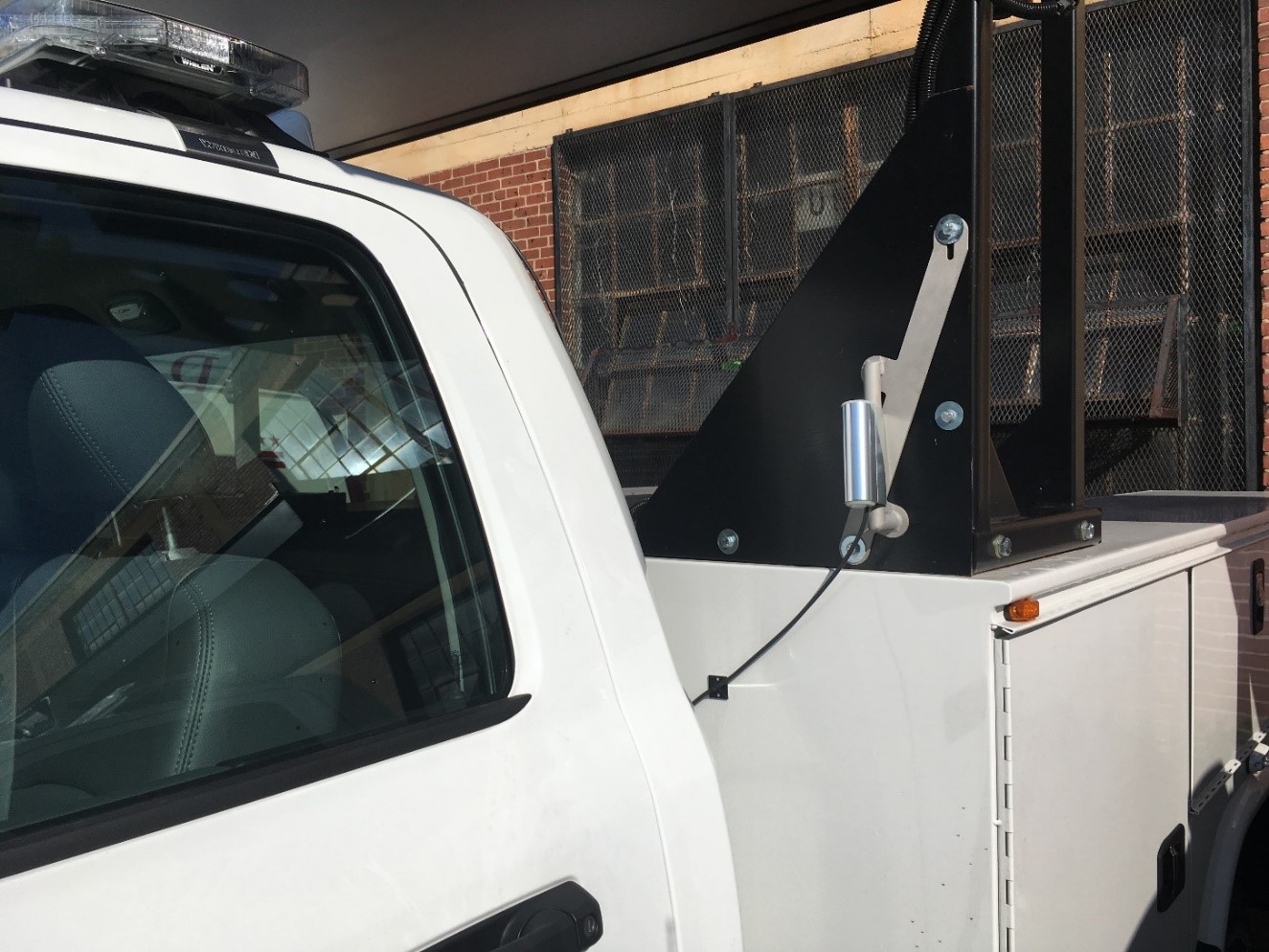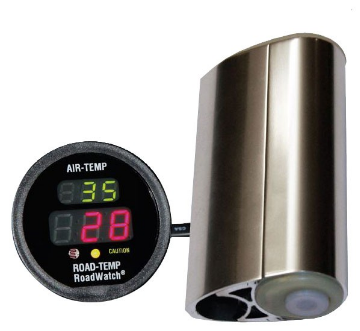Applications and Interfaces
VCC Work Zone Initiatives
Since 2012, VTTI has been working in partnership with VDOT to develop, test, and demonstrate connected vehicle solution components that can improve work zone safety.
VCC Monitor
The VCC Monitor is a web-based client that provides situational awareness for monitoring activities and events within the VCC environment. The application provides a map display with detailed overlays including RSU locations and communication status, active TIM postings, CV-RSU DSRC interaction, vehicle locations, speed and brake status, general traffic speeds (from Google), and dynamic message sign locations.
Supplemental tracking information is collected from drivers/vehicles that opt into a VCC research study. When an OBE is turned on, a dot will be displayed on the map showing the speed and location of the OBE as it passes through the environment. When a vehicle is within range of a RSU and is actively transmitting BSMs, a line is drawn between the vehicle and the RSU it is communicating with.
In addition to the real-time map display, an assets inventory page provides a dashboard of statistics describing activity on the VCC, including RSU heartbeat and uptime status, volume of messages received, and number of active TIMs. A table view can also be selected that shows detailed information for each individual OBU, including the time of last communication, number of messages received in the last 24 hours, and vehicle identification. These table views provide a way to present monitoring information to system operators.

VCC Mobile

A VCC mobile application for Android smart phones* has been developed to provide a user interface platform that can be used to test application exchanges with a driver. The app communicates with the VCC Cloud server application via a public API. The smart phone presents relevant information derived by the VCC system to the driver. The application provides real-time messaging capabilities to drivers in a format that limits attentional demand and is appropriate for use while driving.
Typical message content includes the following:
- Traffic incident information
- Variable dynamic message sign content
- Work zone messages
- Weather event alerts
- Active traffic management system status
- Traffic signal phase and timing (SPaT) information
- Presence of emergency management services vehicles

The VCC Mobile app will communicate with OBU-equipped vehicles via Wi-Fi and use the OBU’s GPS information and DSRC communication channels to exchange messages with the RSUs and VCC Cloud. When an OBU is not present, the application will switch to using the cell phone’s native GPS and cellular data communications channels providing a seamless transition from DSRC-equipped to broader deployment environments.
Regardless of configuration, TIMs are received from the VCC Cloud and will be presented to the driver through a user interface that supports a variety of different information display functions. TIMs posted regarding locations ahead of the vehicle’s path of travel are listed in a queue, and the distance to the message area is counted down as the driver approaches. Once the vehicle enters the active geo-area for the message, the message displays to the driver with a detail panel, and a text-to-speech voice interface reads the message content to the driver. Drivers may also tap on an upcoming TIM in the queue to get a preview of the information it contains.
This same interface has been expanded to support an active traffic management (ATM) display, traffic signal assistance display, and current speed limit display function. Aspects of the display strategy are context-relevant, meaning that certain display features are only posted at times when they are relevant to the current driving task. For example, the ATM display is only present when driving on an ATM-controlled road and a signal display is only present when approaching signals that support SPaT output.
To support crowdsourced data collection, the driver may make reports back to the system via a speech-to-text interface to indicate traffic, weather, and infrastructure issues as well as other specific incidents back to the system. The driver’s verbal reports are automatically mapped to a series of event types that may then be further consumed and used within the Cloud computing system.
*VCC Mobile is a native Android application that runs on devices equipped with Android 4.4 (API level 19) or newer, up to and including Oreo (Android 8.x, API level 26+).
VCC Worker
The VCC Worker application facilitates the communication of relevant work zone and maintenance information between work zone personnel and drivers. Work zone personnel select their duty status (i.e., on/off duty) and their current activity (e.g., snow plow, mowing, static work area, etc.). This information is sent to the VCC Cloud via cellular communications where it is processed, allowing advisories and alerts to be created for drivers. The VCC Cloud builds dynamic traveler messages and pushes them to drivers on the VCC Mobile app via DSRC or cellular depending on their position, speed, direction, etc.

Pothole Detection and Road Surface Monitoring

VTTI developed a connected vehicle OBU platform to utilize CV applications within the VCC to enhance safety and mobility, reduce environmental impacts, and improve transportation operations. This OBU package was installed in five DDOT safety service patrol (SSP) trucks to support V2I communications. An Android smart phone  application was developed from the ground up to collect road surface data, detect potholes, and send that information to VCC Monitor for easy identification and tracking.
application was developed from the ground up to collect road surface data, detect potholes, and send that information to VCC Monitor for easy identification and tracking.
The VCC Cloud manages the collection, storage, and distribution of the real-time data collected by the OBU installed in the SSP trucks. The VCC Cloud provides a means to subscribe to real-time data feeds and access archived data. The VCC Monitor web client utilizes this real-time data interface for all of its application data needs, providing a variety of data visualization and quantification functions.